The SLS by AMG/Mercedes
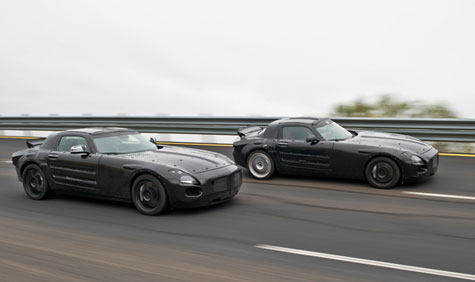
In late 2009 the world will finally see the new Mercedes supercar. Dubbed the SLS AMG, this ultra-modern machine is expected to be the German brand's most prestigious project to date. The company has been steadily leaking information to the press for the past year, an unprecedented campaign of teaser 'spy shots' and a blizzard of complex technical information that's been building a buzz in the specialist press.
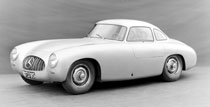
The SLS will be notable for two reasons; it marks the return of the iconic 'gullwing' door configuration, last used in the 1950s, and it also signals the growing importance of its AMG subsidiary, a high performance workshop that builds some of the swiftest - and stealthiest - cars in the world. And - it's recently been announced - an electric version is in the works.
The new design's excellent pedigree
The new SLS will not be subtle, a two-seater supercar pitched at the moneyed enthusiasts who inhabit the upper echelons of the car market. Happily for the target customer, the new design has excellent pedigree. The 1954 300SL was based on a highly successful 1952 racing car, the W194, which drove to victory in an impressive number of races including the Grand Prix in Bern and the Carerra Panamericana in Mexico.
At the time, Daimler-Benz had no initial plans for a road car. It was a man named Maximilian Hoffman, the official importer of Mercedes-Benz cars into the US, who convinced the suits in Stuttgart that his affluent clientele would lap up a sports car for the highway. The 300SL coupe premiered at the 1954 New York Auto Show and was an immediate success thanks to its speed (it was the fastest road car of its day), elegant streamline form and gullwing doors that flapped open towards the sky like wings on a bird.
Those signature doors were no mere styling trick: the car's lightweight steel and aluminium skin was stretched over an extremely strong tubular frame skeleton. However, the structure rose up high over the sills to provide added stability, making it impossible to fix regular doors. The best mechanical solution was to hinge the doors from the roof.
Receive our daily digest of inspiration, escapism and design stories from around the world direct to your inbox.
The original ‘Gullwing’ ceased production in 1957 - the American market desired a larger, more luxurious car. The result was the 300SL roadster, an open two-seater. Hoffman's hunch was correct: of the 1,400 cars made, 1,100 were sold in his territory. Thanks to the Gullwing, Mercedes-Benz’s international image was transformed from being a maker of reliable but sober machines to being a purveyor of desirable sports cars.
Although the marque did experiment briefly with gullwing doors on the C111 concept car in the early 1970s, it has taken the company this long to revive the door concept on a real life production car. Officially named the SLS-AMG, the 21st century Gullwing will wear the marque’s prestigious high-performance badge when it is fully revealed in the flesh at the Frankfurt Motor Show this autumn.
A glimpse at the new SLS and the history of AMG
Wallpaper* got a vague glimpse at the car’s skeleton at the company’s modest Affalterbach plant near Stuttgart, home of Daimler-Benz, where visiting journalists were practically blindfolded so as not to peek at any images that might hint at the design direction Gorden Wagener and his team have in mind.
The SLS is the first car AMG has built as a stand-alone product - it is not based on any other Mercedes-Benz platform. Global economy notwithstanding, it's expected to be the first step in a new direction for this niche marque. AMG was founded back in 1967 by a couple of engineers, Hans Werner Aufrecht and Eberhard Melcher, in Germany’s Großaspach. Combining their initials and location to form a suitably functional name, the company quickly gained a reputation as engine specialists, creating a successful racing - and road - car based on the 300 SEL model.
By the mid 1970s, customers were beginning to develop a taste for individually tuned cars and so AMG started adapting technology from motorsport into road cars. The company was well placed to tap into the insatiable demand for very personal requirements, with custom orders coming in thick and fast from Asia and the Middle East.
The real break, however, came in 1990 when the firm signed an agreement with Daimler-Benz that meant AMG products could now be sold at Mercedes-Benz outlets. In 1999, the company was fully incorporated into Daimler-Benz and today the 900 workers are responsible for annual sales of over 24,000 vehicles - making it one of the most profitable parts of the company, despite the global slump in car sales. AMG is very much a bespoke operation - engines are built by hand, for example and - providing the funds are there - the customer's options are unlimited.
The SLS has alot to live up to
In recent years, AMG have breathed their power enhancements on practically every model in the Mercedes range, right up to the very sizeable G class. There's also been a line of special 'Black' editions that mark a return to the company's hardcore sporting roots. The SLS has a lot to live up to. Right now, there's little to see in terms of design beyond the car's basic proportions, which appear similar to the SLR McLaren developed in conjunction with the British engineering firm at the turn of the century.
According to an AMG spokesman, the SLS is a modern-day interpretation of its forebear. In terms of technology there are plenty of nods to the past, albeit with an ultra-modern twist. Just like the 300SL, the new coupe is low slung and extremely lightweight thanks to an all-aluminium chassis and body, and roof-hinged doors. The car will be powered by a revised version of AMG’s own 6.3-litre V8 engine, mounted at the front and connected to the rear-mounted seven-speed double clutch transmission, helping create near-perfect weight distribution. Performance figures are more than promising - if not world-beating. We were told the SLS will speed to 62mph in just 3.8 seconds and reach an electrically limited 196mph.
And that's not all
The 'electric drive' version of the SLS, expected in around 2015, should set new standards for high performance electric cars. Adding batteries will bring the technology to a select group of demanding, tech-hungry customers who will give the supercar an aura of desirability the technology so desperately needs.
Company and customers alike have high hopes for the SLS. As Mercedes-Benz CEO Dr. Dieter Zetsche told us, ‘the SLS AMG is set to become one of the most alluring cars of our era.’ When the first production cars arrive in 2010, we will finally see whether Mercedes-Benz and AMG have managed to rekindle the spirit of the original Gullwing.
A writer and editor based in London, Nargess contributes to various international publications on all aspects of culture. She is editorial director on Voices, a US publication on wine, and has authored a few lifestyle books, including The Life Negroni.
-
 Men’s Fashion Week A/W 2026 is almost here. Here’s what to expect
Men’s Fashion Week A/W 2026 is almost here. Here’s what to expectFrom this season’s roster of Pitti Uomo guest designers to Jonathan Anderson’s sophomore men’s collection at Dior – as well as Véronique Nichanian’s Hermès swansong – everything to look out for at Men’s Fashion Week A/W 2026
-
 The international design fairs shaping 2026
The international design fairs shaping 2026Passports at the ready as Wallpaper* maps out the year’s best design fairs, from established fixtures to new arrivals.
-
 The eight hotly awaited art-venue openings we are most looking forward to in 2026
The eight hotly awaited art-venue openings we are most looking forward to in 2026With major new institutions gearing up to open their doors, it is set to be a big year in the art world. Here is what to look out for
-
 Peugeot’s sparky 308 gets hybrid power and handsome lines
Peugeot’s sparky 308 gets hybrid power and handsome linesThe Peugeot 308 proves that mass-market design needn’t be dull, blending hybrid power with sharp lines and excellent detailing
-
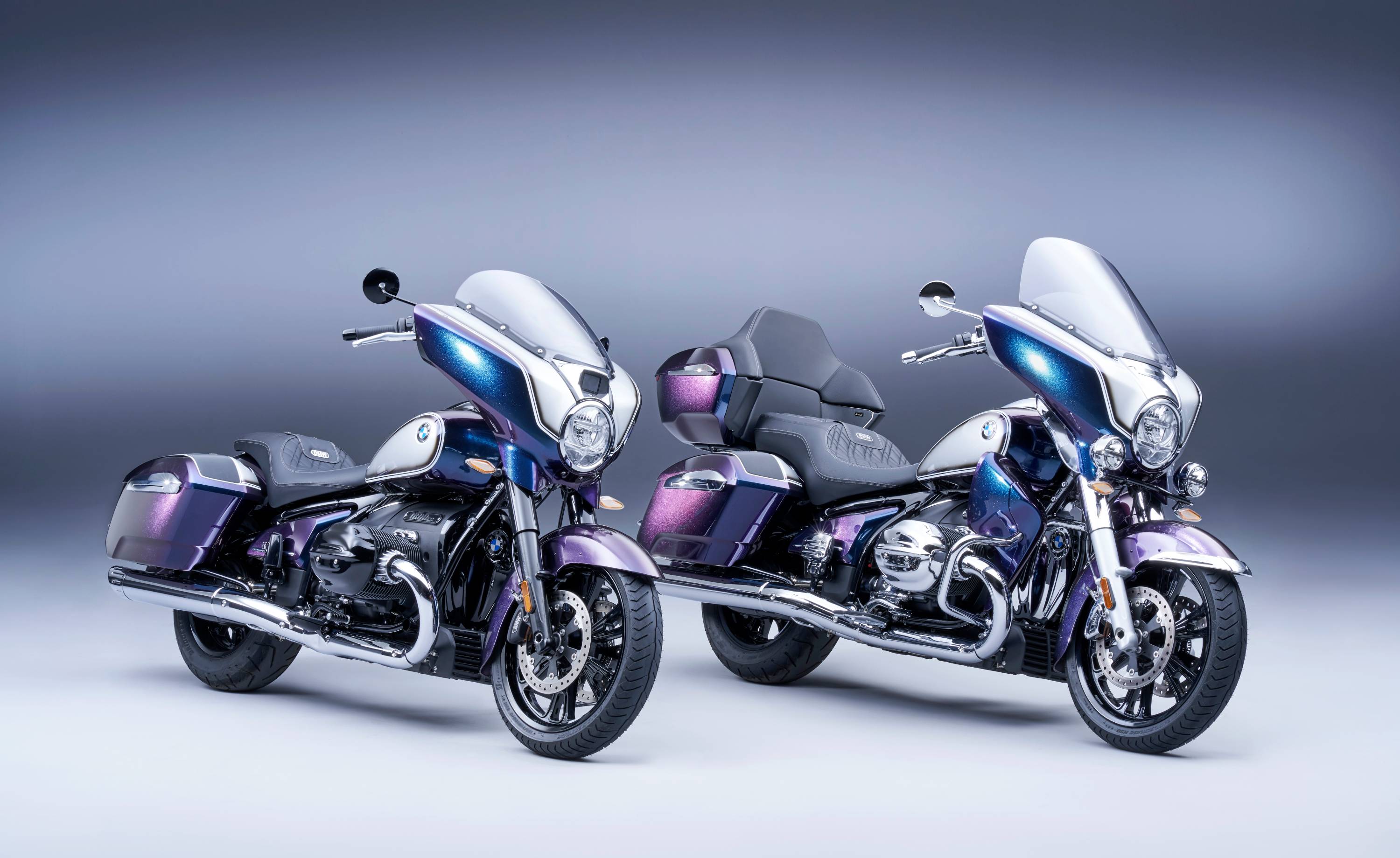 BMW Motorrad brings out the big guns for its newest cruisers
BMW Motorrad brings out the big guns for its newest cruisersBMW Motorrad R 18 Bagger and Transcontinental set the tone for high-voltage cruising with a brand collaboration with speaker specialist Marshall
-
 Dacia’s new Manifesto concept is a true outdoor utility vehicle
Dacia’s new Manifesto concept is a true outdoor utility vehicleUtilitarian auto brand Dacia sets a bold new agenda with its Manifesto, a concept car pitched at the active outdoor market
-
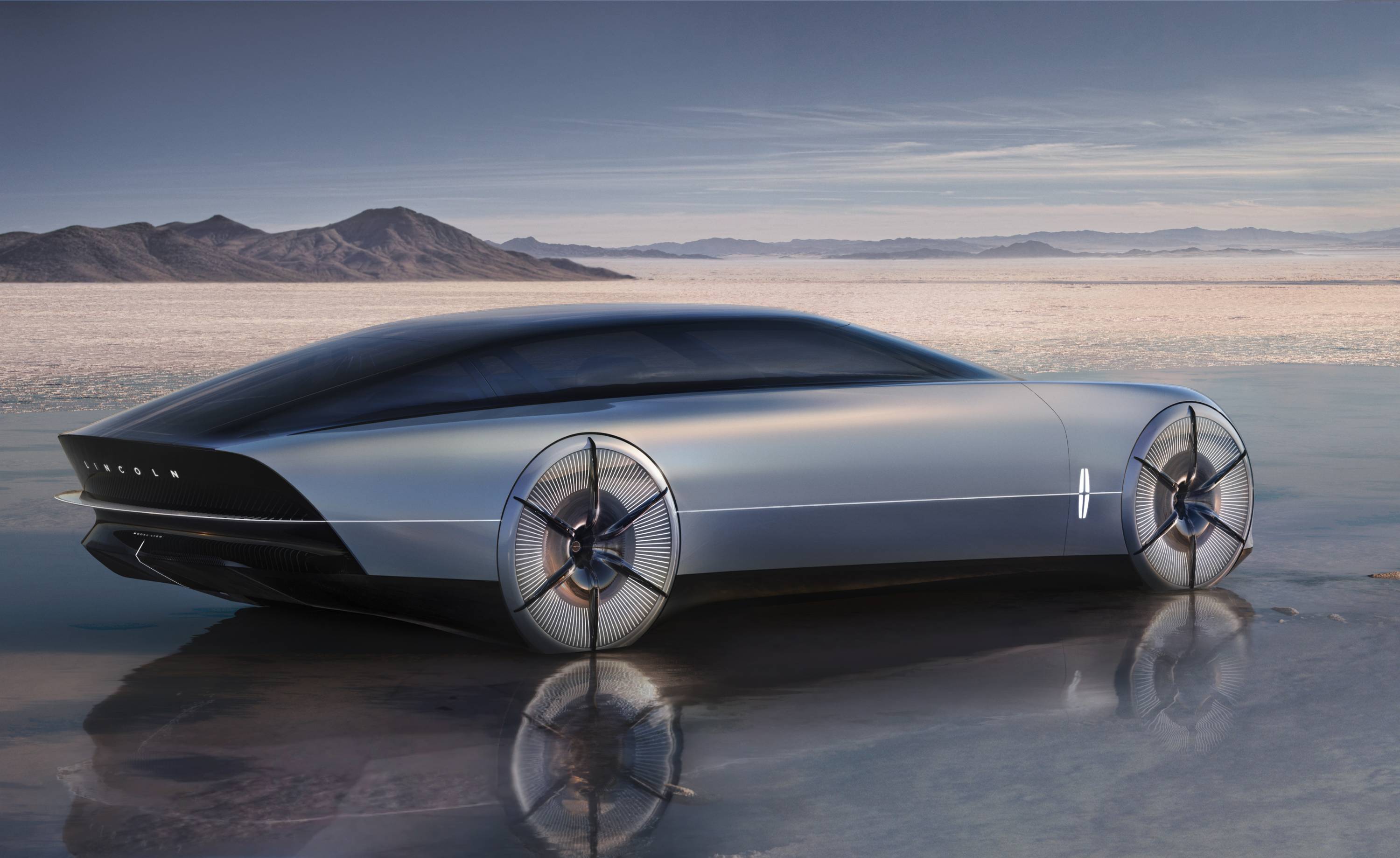 The sun sets on traditional supercars at California’s Monterey Car Week
The sun sets on traditional supercars at California’s Monterey Car WeekMonterey Car Week, the world’s most prestigious car gathering, is showcasing ever-more extravagant special editions, coachbuilt cars and all-new electric concepts. Here are seven key machines from 2022
-
 Is McLaren’s GT a sports car, a tourer, or the best of both?
Is McLaren’s GT a sports car, a tourer, or the best of both?The McLaren GT is a capable all-rounder dressed up in svelte supercar clothes. It might also be the last of its type
-
 Rolls-Royce puts the Phantom back on its lofty pedestal
Rolls-Royce puts the Phantom back on its lofty pedestalA mid-life refresh ensures the flagship Rolls-Royce Phantom Series II is at the top of its game, a last hurrah for traditional engines before an electrified future
-
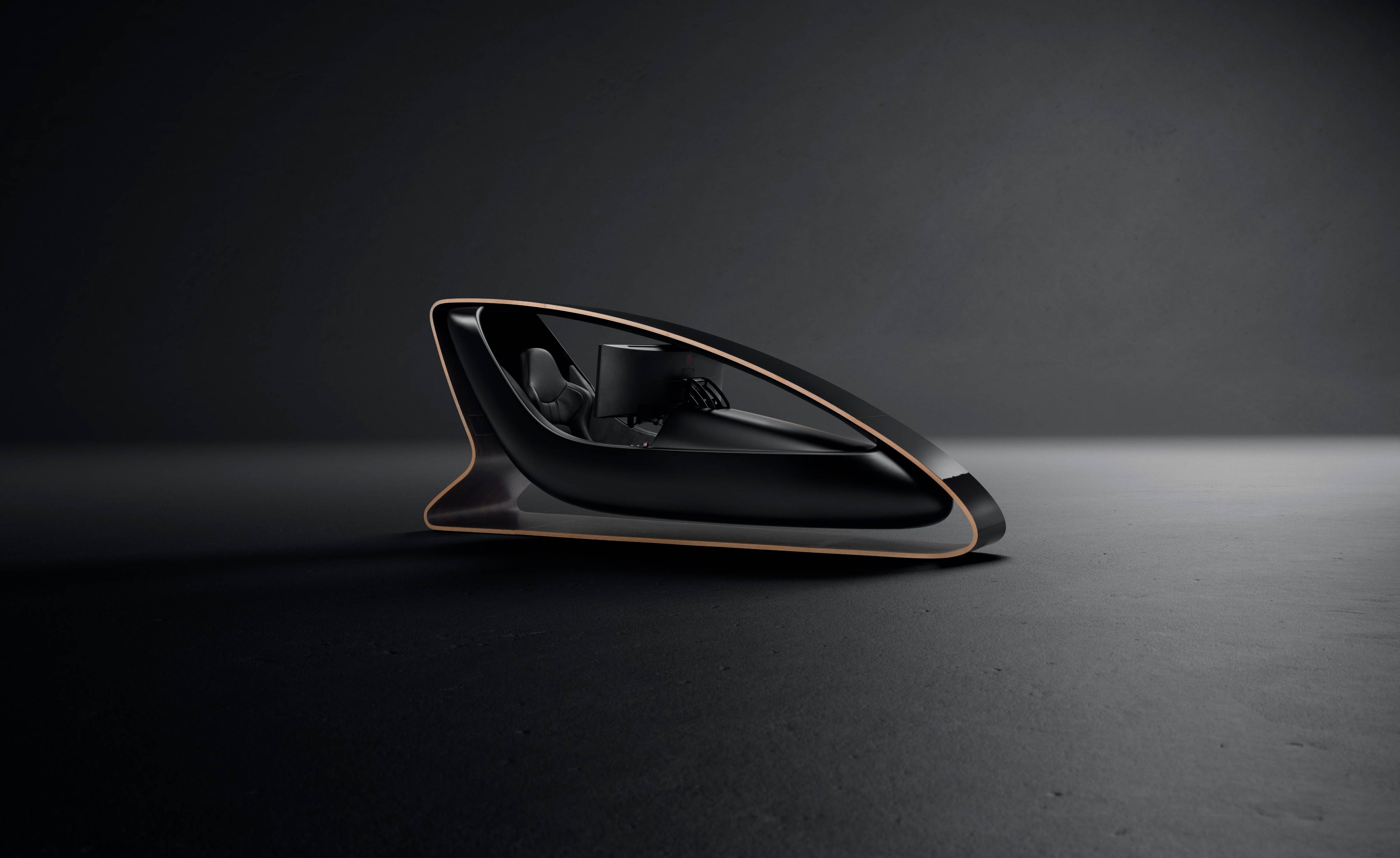 Prodrive’s new racing simulator is shaped by Callum to be front of the grid
Prodrive’s new racing simulator is shaped by Callum to be front of the gridThe racing simulator shapes up – this new design from Prodrive and Callum is honed for the high-end games room
-
 928 by Nardone Automotive: a restomod Porsche with Gallic verve and Italian style
928 by Nardone Automotive: a restomod Porsche with Gallic verve and Italian style928 by Nardone Automotive is a gracefully modernised version of Porsche’s endearingly different 928